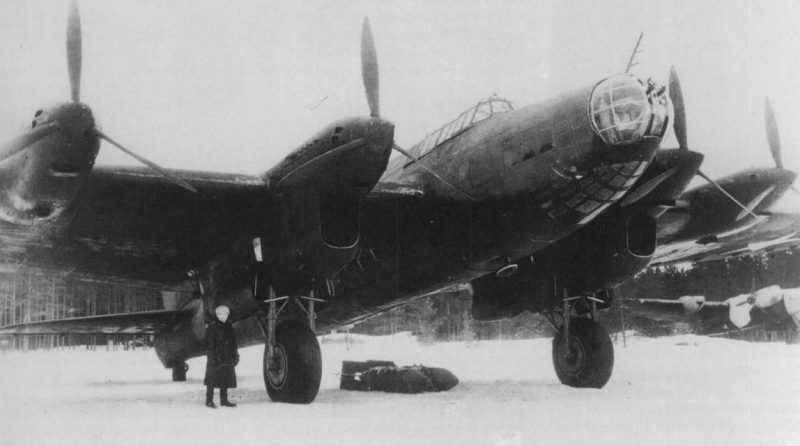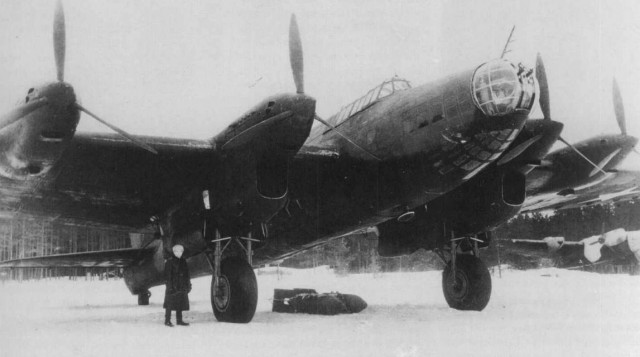In June 1941, Hitler launched Operation Barbarossa to attack the Soviet Union. Thousands of German troops, tanks and aircraft stormed the west of the country. But in August 1941, Stalin launched a deadly air attack on the centre of the Nazi regime in Berlin. Fourteen Soviet bombers took off from a military base near Leningrad headed to the German capital.
The British Royal Air Force had already bombed Berlin by this time as well as the Soviet Navy, but their impact was small. So now Stalin wanted to make a bigger impact using Petlyakov Pe-8 four-engine bombers. They were filled with diesel to increase their range and loaded with bombs.
The Communist regime was highly sceptical of strategic bombing raids, but since Hitler had ordered the bombing of Moscow, whereby around 104 tonnes of bombs and more than 45,000 incendiaries were dropped by German aircraft within five hours, Stalin wanted revenge.
The Petlyakov Pe-8 was the last in a line of four-engine, long-range bombers. It was developed in the mid-1930s. The plane featured a way for gun men to crawl along the wing to reach machine gun positions in the rear of the engines. Its four wing-mounted engines were also fitted with a booster or supercharger unit.
A second prototype was also developed with improved engine capacity and a rear machine-gun turret. Under one of Stalin’s comrade purges, he imprisoned or executed many of the men behind the bomber’s development. However, Aleksandr Filin from the Scientific Research Institute for the Air Forces was given permission from Stalin to continue the aircraft’s development.
Limited production began near Moscow in early 1940. The aircraft could travel at 265 mph at just over 20,000 feet. It could hold just under 4500lbs of bombs and travel up to 2900 miles.
The Pe-8 held an 11 man crew including the pilot and co-pilot.
A special unit for the first Pe-8s off the production line was created and named the 432nd BAP or special purpose bomber regiment under Major Viktorin Lebedev, just at the time when Germany began to invade the Soviet Union, the History Net reports.
Their mission was to fly along the coast of Estonia and Latvia, across the Baltic Sea and down to Berlin in a night time bombing raid.
While a few of the bombers didn’t make it to Berlin due to engine failure and other technical problems, 11 of the Pe-8s managed to reach and bomb Berlin.
In a report to Stalin, the regiment documented 11 aircraft reached Berlin, six returned to base, one was shot down by enemy fire, and the remaining air craft are either missing or had crashed. The regiment’s commander pleaded to do away with diesel for operational aircraft and homing beacons so that missions could find their way home.Both were subsequently implemented.

